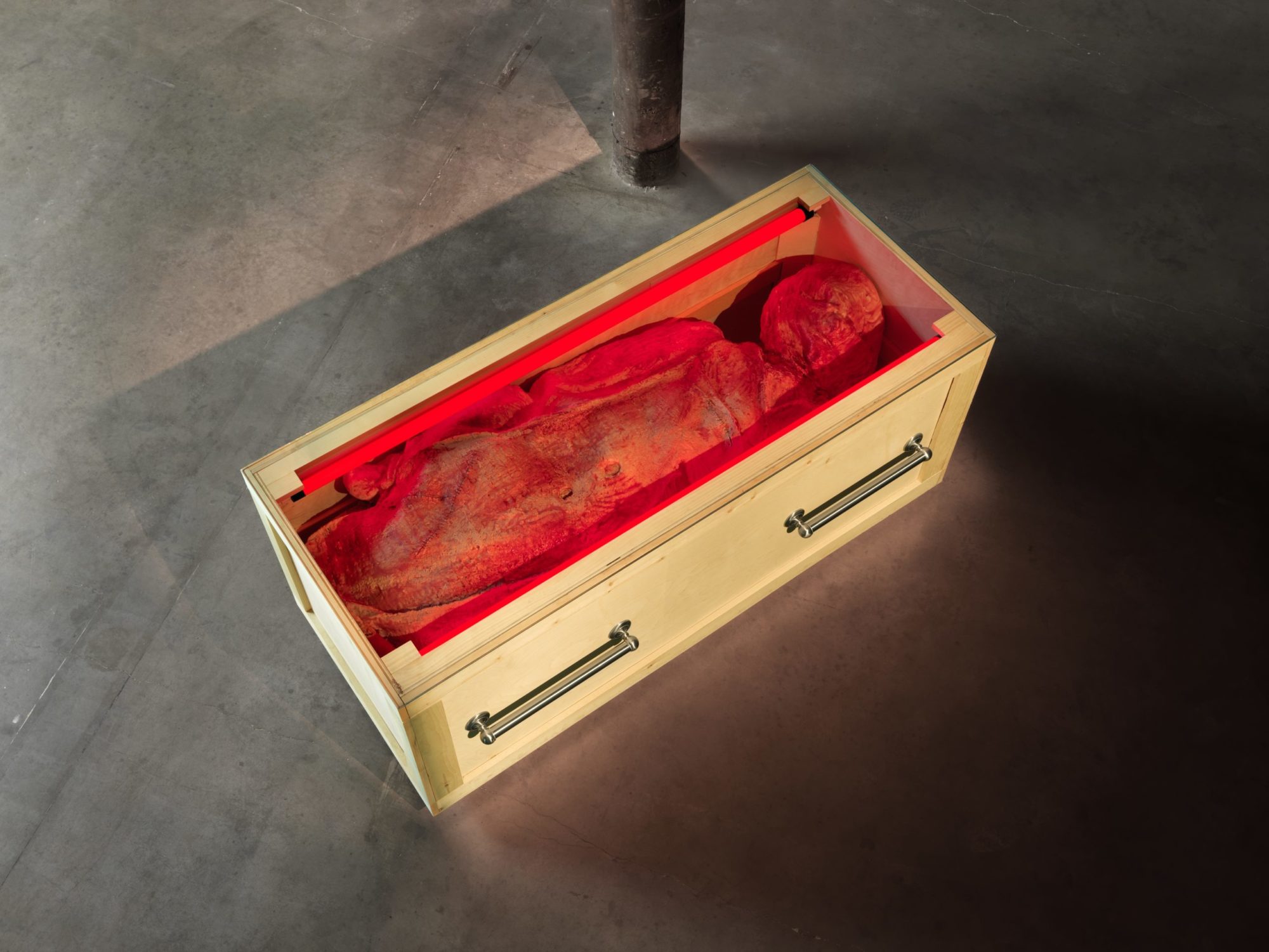Doreen Garner

Doreen Garner, PURGE (performance), 2017, performed during White Man on a Pedestal: Doreen Garner and Kenya (Robinson), Pioneer Works, Brooklyn, NY, November 30, 2017 [photo: Lexie Moreland; courtesy of the artist and Pioneer Works, New York]
Share:
This text originally appeared in ART PAPERS Fall/Winter 2020, Monumental Interventions, as part of a special dossier highlighting seven artists who have fought—and continue the fight—to transform their public spaces by uncovering suppressed histories, resisting oppression, and telling formerly silenced truths.
***
As if by alchemy, Philadelphia-based artist Doreen Garner took the stone monument of Dr. J. Marion Sims and made it flesh. Her silicone replica takes the physical likeness of Sims and the monumental proportions of the statue, which can now be found, without its original pedestal, at Green-Wood Cemetery in Brooklyn, NY. This placement was a concession to public demands that the statue be removed from its original home in Central Park and destroyed. Sims died in 1883, but his celebratory sobriquet as the “father of gynecology” persists. This legacy neglects his nefarious use of Black women’s bodies to perform experimental surgeries without anesthesia. The statue remains intact, albeit foul with the smell of urine. Defacing a symbolic representation of a public figure as stand-in for the person’s physical body is an act of iconoclasm. Iconoclasm in the United States has roots in the American Revolution, when colonists dismembered a statue of King George III to assert their independence.
Doreen Garner, Skin of PONEROS, 2017, silicone, staples, Poly-Fil, wood coffin, glass, 32 x 75.5 x 33.5 in. [photo: Dan Bradica; courtesy of the artist and Pioneer Works, New York]
Garner’s practice represents the body as muscle, fat, sinew, and blood, which bespeak an extreme vulnerability and toe the line between beauty and vulgarity. In her 2017 performance PURGE at Pioneer Works, Garner and her Black women assistants enacted a vesicovaginal fistula repair on Sims’ massive, life-like form. The “surgery” involved the visceral cutting, pulling, and suturing of flesh rendered hyper-realistic by Garner’s sculptural mastery of silicone. The intricate composition of Sims’ innards were shown through the video feed of an endoscopic camera inserted into the statue and projected on a screen. Garner’s performance and the residual corpse went beyond traditional acts of iconoclasm to cast Sims’ body as vulnerable. By reperforming Sims’ infamous act of mutilation, Garner explores the potential for such an act to address trauma, find healing, and avenge Black women through iconoclasm. This exchange of power between Sims and Garner transcends temporalities and defies the binary of right and wrong. In creating an opportunity to inflict the same violence upon Sims as he did upon countless Black women, Garner’s work contemplates justice.
Doreen Garner, Purge (performance), 2017, performed during White Man on a Pedestal: Doreen Garner and Kenya (Robinson), Pioneer Works, Brooklyn, NY, November 30, 2017 [photo: Lexie Moreland; courtesy of the artist and Pioneer Works, New York]

